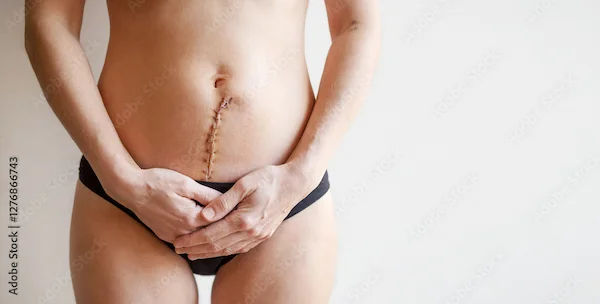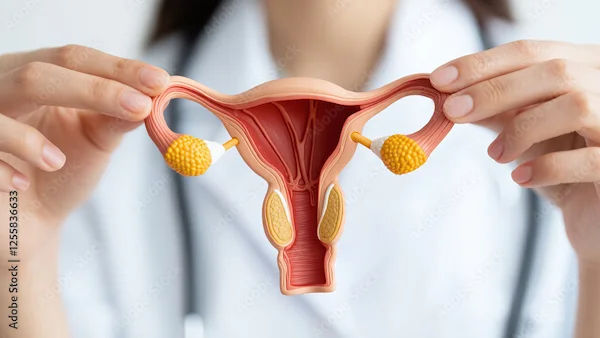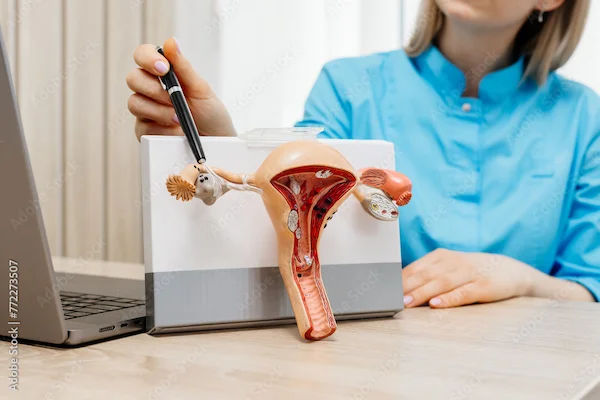Symptoms Of Cystocele After Hysterectomy
Learn about the common symptoms of cystocele after hysterectomy, including pelvic pressure, urinary issues, and discomfort. Understand how to recognise signs early and explore treatment options for effective relief.

Written by Dr.Sonia Bhatt
Last updated on 4th Jul, 2025
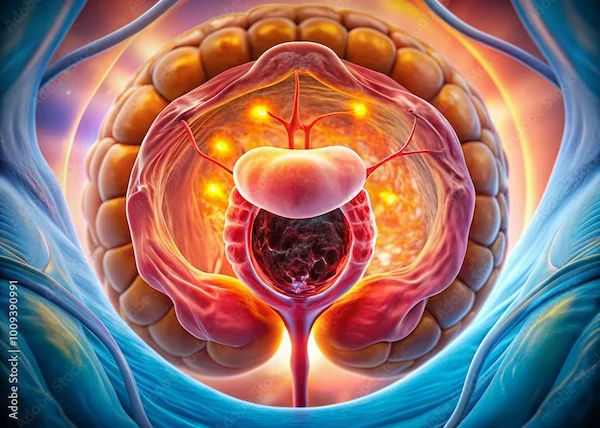
Introduction
A hysterectomy (surgical removal of the uterus) is a common procedure for various gynaecological conditions. However, some women may experience a condition called cystocele after the surgery. If you or a loved one is dealing with this, it’s important to understand what it is, its symptoms, and how to manage it effectively.
What Is a Cystocele?
A cystocele, also known as a prolapsed bladder, occurs when the bladder drops into the vaginal wall due to weakened pelvic floor muscles and tissues. This can happen after a hysterectomy because the uterus provides support to the pelvic organs, and its removal may sometimes contribute to weakening the surrounding structures.
Common Symptoms of Cystocele After Hysterectomy
If you’ve had a hysterectomy and notice any of the following symptoms, you may have a cystocele:
1. A Bulge or Pressure in the Vagina: You might feel like something is coming out of your vagina, especially when standing or straining.
2. Difficulty Urinating: Trouble starting or fully emptying the bladder.
3. Frequent Urinary Tract Infections (UTIs): Due to incomplete bladder emptying.
4. Stress Incontinence: Leaking urine when coughing, sneezing, or laughing.
5. Pain or Discomfort: Especially during intercourse or prolonged standing.
6. Lower Back Pain: A dull ache due to the bladder’s abnormal position.
If these symptoms interfere with daily life, it’s important to consult a doctor.
Consult Top Specialists for Personalised Tips
Why Does Cystocele Happen After Hysterectomy?
Several factors can contribute to cystocele after a hysterectomy:
Weakened Pelvic Floor Muscles: Due to ageing, childbirth, or hormonal changes.
Loss of Uterine Support: The uterus helps hold pelvic organs in place; its removal can sometimes lead to prolapse.
Chronic Straining: Heavy lifting, chronic coughing (e.g., from smoking or asthma), or constipation can weaken pelvic muscles.
How to Manage Cystocele Symptoms?
While severe cases may require medical intervention, many women find relief with lifestyle changes and exercises:
1. Pelvic Floor Exercises (Kegels): Strengthening pelvic muscles can help support the bladder.
How to do Kegels: Tighten the muscles you use to stop urinating midstream, hold for 5 seconds, then relax. Repeat 10-15 times, 3 times a day.
2. Maintain a Healthy Weight: Excess weight puts pressure on pelvic organs, worsening prolapse.
3. Avoid Heavy Lifting & Straining: Lifting heavy objects or straining during bowel movements can worsen symptoms.
4. Treat Constipation: Eat fibre-rich foods (vegetables, whole grains) and stay hydrated to avoid straining.
5. Use a Pessary (If Recommended by Doctor): A small silicone device inserted into the vagina can help support the bladder.
6. Hormone Therapy (For Postmenopausal Women): Low oestrogen can weaken pelvic tissues. Topical oestrogen creams may help restore strength.
When to See a Doctor?
If symptoms worsen or affect your quality of life, consult a gynaecologist or urologist. Severe cases may require:
Physical Therapy: Specialised pelvic floor therapy.
Surgery: To repair the prolapse (rarely needed unless symptoms are severe).
Conclusion
A cystocele after hysterectomy can be uncomfortable, but with the right care, many women manage it well. If you’re experiencing symptoms, don’t hesitate to seek medical advice. Early intervention can prevent complications and improve comfort.
Consult Top Obstetrician and Gynaecologist
Consult Top Specialists for Personalised Tips

Dr. Alapati Jyotsna
Obstetrician and Gynaecologist
4 Years • MBBS MS Obstetrics and Gynaecology
Visakhapatnam
Apollo 24|7 Clinic - Andhra Pradesh, Visakhapatnam

Dr Swatika Kumari
Obstetrician and Gynaecologist
19 Years • MBBS, DGO, DNB Obstetrics & Gynaecology
Nashik
Apollo 24|7 Clinic - Maharashtra, Nashik

Dr. Priyanka Surisetty
Obstetrician and Gynaecologist
8 Years • MBBS, DGO
Visakhapatnam
Apollo 24|7 Clinic - Andhra Pradesh, Visakhapatnam

Dr. Debashree Saha
Obstetrician and Gynaecologist
4 Years • MBBS, MS (Obstetrics & Gynaecology)
Kolkata
DR. DEBASHREE SAHA Clinic, Kolkata
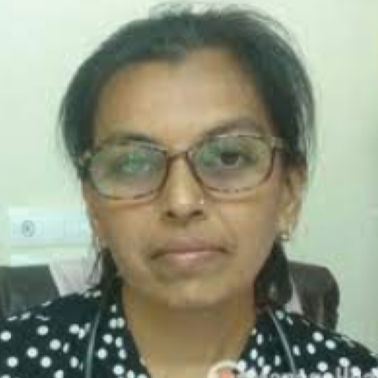
Dr. Mona Yadav
Obstetrician and Gynaecologist
19 Years • MBBS, MD (Obstetrics & Gynaecology)
Dombivli
Nulife multispeciality, Dombivli
Consult Top Obstetrician and Gynaecologist

Dr. Alapati Jyotsna
Obstetrician and Gynaecologist
4 Years • MBBS MS Obstetrics and Gynaecology
Visakhapatnam
Apollo 24|7 Clinic - Andhra Pradesh, Visakhapatnam

Dr Swatika Kumari
Obstetrician and Gynaecologist
19 Years • MBBS, DGO, DNB Obstetrics & Gynaecology
Nashik
Apollo 24|7 Clinic - Maharashtra, Nashik

Dr. Priyanka Surisetty
Obstetrician and Gynaecologist
8 Years • MBBS, DGO
Visakhapatnam
Apollo 24|7 Clinic - Andhra Pradesh, Visakhapatnam

Dr. Debashree Saha
Obstetrician and Gynaecologist
4 Years • MBBS, MS (Obstetrics & Gynaecology)
Kolkata
DR. DEBASHREE SAHA Clinic, Kolkata

Dr. Mona Yadav
Obstetrician and Gynaecologist
19 Years • MBBS, MD (Obstetrics & Gynaecology)
Dombivli
Nulife multispeciality, Dombivli

